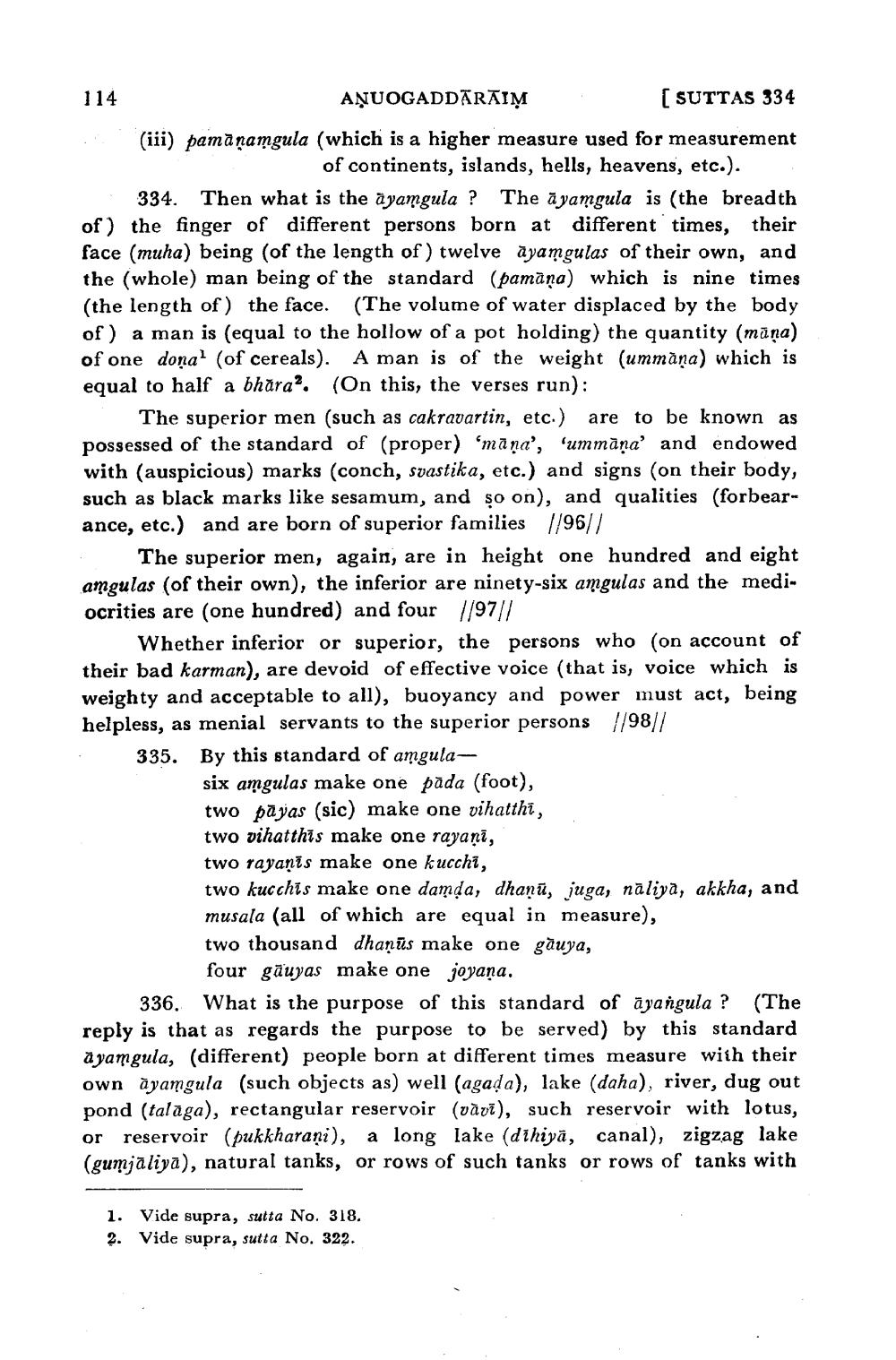________________
114
AŅUOGADDĀRĀIM
( SUTTAS 334
(iii) pamanamgula (which is a higher measure used for measurement
of continents, islands, hells, heavens, etc.). 334. Then what is the ayamgula ? The ayamgula is (the breadth of the finger of different persons born at different times, their face (muha) being (of the length of) twelve ayamgulas of their own, and the (whole) man being of the standard (pamāņa) which is nine times (the length of the face. (The volume of water displaced by the body of a man is (equal to the hollow of a pot holding the quantity (māna) of one dona(of cereals). A man is of the weight (ummāna) which is equal to half a bhāra?. (On this, the verses run):
The superior men (such as cakravartin, etc.) are to be known as possessed of the standard of (proper) ‘māņa', 'ummāņa' and endowed with (auspicious) marks (conch, svastika, etc.) and signs (on their body, such as black marks like sesamum, and so on), and qualities (forbearance, etc.) and are born of superior families //96//
The superior men, again, are in height one hundred and eight amgulas (of their own), the inferior are ninety-six amgulas and the mediocrities are one hundred) and four 1/97//
Whether inferior or superior, the persons who (on account of their bad karman), are devoid of effective voice (that is, voice which is weighty and acceptable to all), buoyancy and power must act, bei helpless, as menial servants to the superior persons //98// 335. By this standard of amgula
six amgulas make one păda (foot), two pāyas (sic) make one vihatthi, two vihatthis make one rayani, two rayaņīs make one kucchi, two kucсhis make one damda, dhanī, juga, näliya, akkha, and musala (all of which are equal in measure), two thousand dharūs make one găuya,
four gāuyas make one joyaņa. 336. What is the purpose of this standard of āyangula ? (The reply is that as regards the purpose to be served) by this standard ayamgula, (different people born at different times measure with their own āyamgula (such objects as) well (agada), lake (daha), river, dug out pond (talaga), rectangular reservoir (vävi), such reservoir with lotus, or reservoir (pukkharani), a long lake (dihiyā, canal), zigzag lake (gumjaliya), natural tanks, or rows of such tanks or rows of tanks with
1. Vide supra, sutta No. 318. 2. Vide supra, sutta No. 322.




